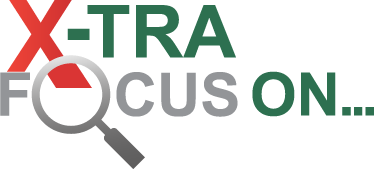
 the Moon Phases
the Moon Phases
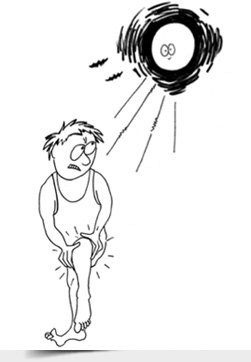
The X-TRA focus on the Moon Phases CPD course offered by the International Academy of Reflexology & Meridian Therapy is open for all registered therapists and practitioners who wish to broaden their pathophysiological knowledge using the concepts of energy and the magnetic influences of the moon on the human body.
Participants will relate to their bodies as magnets, understanding, for example, the polarities of the human brain, heart and circulation system. The synergy between the female menstrual cycle and the moon phases will be explored, as well as the differences in human polarity caused by conception at the new moon phase versus conception at full moon phase.
The course will further discuss the chemistry of the human body and how lifestyle choices will influence the pH levels of the tissue fluid in the body. Any imbalances will form toxic molecules that congest along the Meridians, a powerful visual assessment tool. Foods have their own vibrational energy which can have an adverse effect on people depending on the person’s individual polarity.
The course will explore the consequences of congestions along the Meridians and offer explanation to why pains become stronger around the moon phases and seasonal changes. The participants will learn how to protect themselves against external magnetic influences that can interfere with the balances along the Meridians and their general health. On completion of the course, the participants will be able to convey a lifestyle change that may not only help and support general health, but also sensitive issues such as infertility.
The course has a practical component using a pendulum to measure polarity energy of individuals and of various foods.
1. Energy structure of the human body
- Our bodies are like “magnets”
- Samples of energy uses in the body
- The polarity of the brain
- The polarity of the heart and circulation system
2. Female menstrual cycle versus moon phases
- Conception at new moon phase
- Conception at full moon phase
- Polarity imbalances
- Polarity compatibility
3. Using the ancient Chinese Meridians as the body’s tool to create a balance
- Toxic molecules along the meridian pathways
- Foods have their own vibrational energy/code
4. Chemistry of the human body
- Understanding the pH factor
5. Magnetic body pains
- Body pains becoming worse around equinoxes
- Body pains becoming worse around solstices
- Body pains becoming worse around moon phases
6. Are you sleeping in a safe place?
- Effect of magnetic radiation
- The Lakhovsky coil
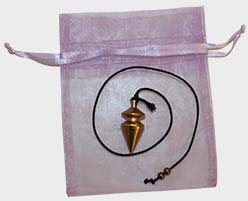
7. Measuring polarities
- The pendulum
- How to measure energy
8. Layout of the two polarity diets
- The plus polarity diet
- The minus polarity diet

 Auricular Therapy
Auricular Therapy
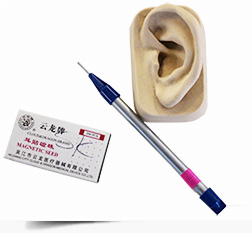
The X-TRA focus on Auricular Therapy CPD course offered by the International Academy of Reflexology & Meridian Therapy is open for all registered therapists and practitioners who wish to broaden their knowledge on alternative practices.
The ear is one of many body parts that present a microcosm of the body, much like the feet and the hands.
Auricular Therapy utilises the external ear for treatment of health conditions and discomforts in other parts of the body. Reflex points on the ear can be stimulated by manual pressure, magnets, auricular pens and/or ear acupressure seeds. This is also known as ear acupuncture or auricular acupuncture when the stimulation is achieved by the insertion of acupuncture needles. We will use small magnet seeds, however any practitioner who has acupuncture in their Scope of Practice may use needles instead.
The reflexes found on the ear can help to regulate the body’s internal organs, structures and functions – much like a traditional reflexology treatment performed on the hands and feet.
Auricular Therapy has been widely used since ancient Chinese times, however it was only in the 1950’s when the ear was first systematically mapped according to the body by Dr Paul Nogier.
1. The history of Auricular Therapy
2. Auricular Cardiac Reflex (ACR)
- Basic knowledge of ACR
3. Vascular Autonomic Signal (VAS)
- Basic knowledge of VAS
- Locating VAS correctly (practical)
4. The anatomy of the ear and its corresponding organs or body systems
5. The benefits of Auricular Therapy
6. Parts of the ear relating to corresponding health conditions and imbalances (practical)
- Anti-inflammation, allergies
- Arthritis
- Musculoskeletal system
- Lumbo-sacral spine, low back pain
- Temporal and occipital headaches
- Hormonal disorders
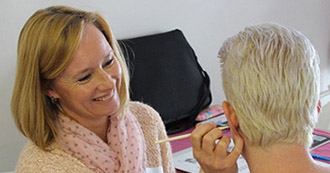 Shoulder, arm, elbow, wrist and hand pain
Shoulder, arm, elbow, wrist and hand pain- Hip, knee, ankle and foot pain
- Thoracic organs – heart and lungs
- Master cerebral point, master omega point, pre-frontal lobe
- Nervousness, fear, worry, psychosomatic point
- TMJ, teeth, anti-depression point

 the Respiratory System
the Respiratory System
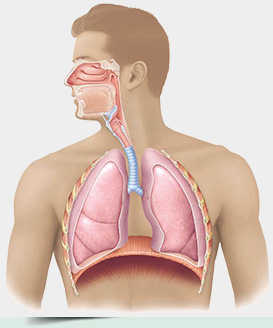
The X-TRA focus on the Respiratory System CPD course offered by the International Academy of Reflexology & Meridian Therapy is open for all registered therapists and practitioners who wish to broaden their pathophysiological knowledge of the respiratory system using an ancient Chinese philosophical approach by incorporating the Meridians and the Five Elements in combination with Western observations and views. Visual assessments of the feet, face, hands and body that can be associated with the respiratory system are generic and can be used by all registered modalities as part of a treatment protocol.
This course will guide the participant through each respiratory medical condition and correlate these conditions to specific meridians and their corresponding organs. An understanding the philosophy of the Meridians and the Five Elements will ultimately assist the therapist or practitioner in identifying the underlying root cause of any respiratory condition, enabling a more precise treatment.
Discussing, for example, the Stomach Meridians, will encompass an understanding of the acid/alkaline balance within the body and the influence this sensitive balance can have on microorganisms, oxygen, nitric oxide, viruses and germs in the respiratory system.The Stomach Meridians are furthermore related to the upper respiratory tract and associated conditions, as well as asthma, bronchitis and diaphragm conditions. This course will further demonstrate how the Liver Meridians are associated with pneumonia, tuberculosis, chronic obstructive pulmonary disease (COPD) and cystic fibrosis, as well as how the Kidney Meridians are linked to chronic lung disease, pulmonary embolism and oedema.
Respiratory conditions associated with the Lung and Colon Meridians will also be discussed, as well as those associated with the Bladder Meridians. Incorporating the philosophies of the Five Elements, this course will concentrate on the Metal Element that relates to vitamins, minerals, amino acids and enzymes, and links the respiratory system to skin conditions. Muscles associated with the respiratory system will also be discussed as part of a treatment protocol.
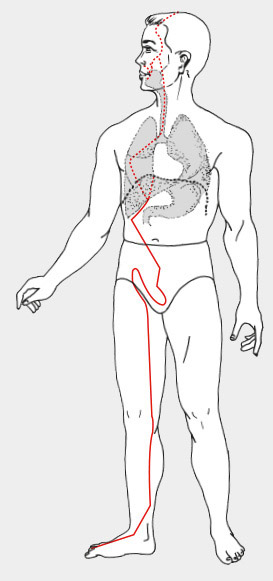 1. The upper respiratory tract: rhinitis, sinusitis, common cold and influenza, tonsillitis and laryngitis
1. The upper respiratory tract: rhinitis, sinusitis, common cold and influenza, tonsillitis and laryngitis
- Body temperature and Five Elements (season)
2. Bronchitis
- Body temperature
3. Pneumonia
- The Liver Meridian (internal)
4. Pleurisy and other disorders of the pleura
- Viruses and germs (Stomach Meridian)
5. Tuberculosis
- The Liver Meridian (internal)
- Vitamin C
6. Chronic obstructive pulmonary disease (COPD)
- The Liver Meridian (internal)
7. Asthma
- Metal Element/time of peak
8. Cystic fibrosis
- The Liver Meridian (internal)
- The Metal Element
- Glutathione
- Clubbing of nails – Wood Element/the nails
9. Bronchopulmonary dysplasia – chronic lung disease
- The Kidney Meridian
- Body temperature
- The lung reflexes in the feet of a baby
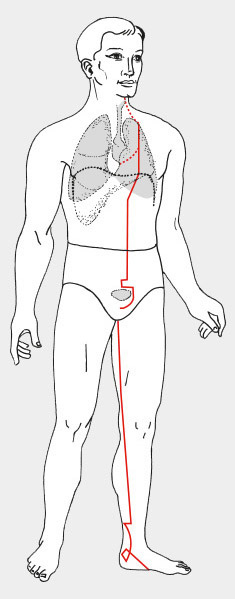 10. Pulmonary embolism
10. Pulmonary embolism
- The Kidney Meridian
11. Pulmonary oedema
- The Kidney Meridian
12. Tumours
- Relate to the pathways of the Meridians
13. Diaphragm (muscle)
- The Stomach Meridian
- The Bladder Meridian
14. Shallow breathing
- Face/cheeks
- The Metal Element/emotion
15. How the modern world looks at the respiratory system
- Must have picked up a bug
16. Acid/alkaline lifestyle
- Mouth breather vs. nose breather
- The confirmed functions of nitric oxide
- Microorganisms develop into harmful forms in acidic environments with little oxygen
- The importance of oxygen
- The Metal Element
17. A vaccine for every cold and flu
- Have you ever wondered what is really in vaccines?
18. Allergies and food intolerances
- Are we truly intolerant to natural wheat and dairy products or rather to what these products have become?
- Wheat and milk
19. Visual assessments of the feet
- Position of the lung reflexes in the feet
- New born babies – Note: Lung/bronchi and sternum reflexes
- Callous in lung reflexes of the feet
- Plantar warts in lung reflexes of the feet
- Diaphragm reflexes in the feet
- Sternum reflexes in the feet
- Pigeon chest/concaved chest
20. Meridians connected to the respiratory system
- Assessment of the Lung Meridian
- Assessment of the Colon Meridian
- Assessment of the Stomach Meridian
- Assessment of the Kidney Meridian
- Assessment of the Liver Meridian
- Assessment of the Bladder Meridian
21. Facial visual assessments connected to the respiratory system
- Assessment of the cheeks
22. The Metal Element related to the respiratory system
- Keywords and their relationship
- Skin problems connected to the respiratory system
- Alopecia (lack of body/facial hair or too much body hair)
23. Muscles connected to the respiratory system
24. Body temperature – why do we get more colds during seasonal changes?
- How to help a fever – stimulating the pituitary gland – Liver Meridian
25. A Meridian treatment
- Master the Meridian therapy of the toes

 the Large Intestine
the Large Intestine
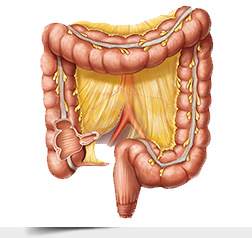
The X-TRA focus on the Large Intestine (Colon) CPD course offered by the International Academy of Reflexology & Meridian Therapy is open for all registered therapists and practitioners who wish to broaden their pathophysiological knowledge of the large intestine using an ancient Chinese philosophical approach by incorporating the Meridians and the Five Elements in combination with Western observations and views. Visual assessments that can be associated with the large intestine are generic and can be used by all registered modalities as part of a treatment protocol.
This course will guide the participant through each medical condition of the large intestine and correlate these conditions to specific meridians and their corresponding organs. An understanding the philosophy of the Meridians and the Five Elements will ultimately assist the therapist or practitioner in identifying the underlying root cause of any large intestinal condition, enabling a more precise treatment.
Some interesting topics will be discussed, for example, the constitution of healthy intestinal flora using an analogy of garden compost to the human digestive system.
Anything that was once alive can be eaten and converted into energy (Chi’), yet the balance of carbon, oxygen and nitrogen are just as important in our internal system as that of garden compost. The harmful development of microorganisms within acidic environments, as well the need for friendly bacteria (lactobacillus acidophilus), will be debated using the Five Elements and the Meridians as assessment tools.
Incorporating the philosophies of the Five Elements, this course will concentrate on the Metal Element that relates to vitamins, minerals, amino acids and enzymes. The Fire and Water Elements will also be discussed linking these to the intestinal conditions such as haemorrhoids and diarrhoea.
The course has a practical component that is suitable for all registered modalities wishing to use the Meridians as a quick and effective practical treatment.
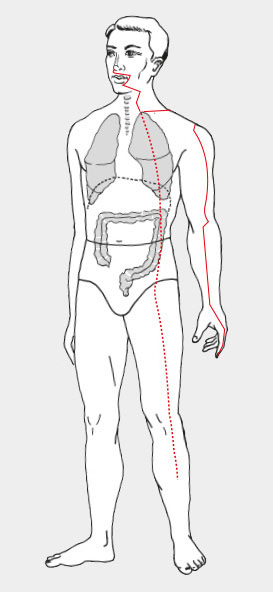 1. The human gastrointestinal tract (GT)
1. The human gastrointestinal tract (GT)
2. Microbiology of the GT
3. The functions of the large intestine (colon)
4. Medical conditions
- Parasites
- Constipation
- Diarrhoea
- The Kidney Meridians and Water/Fire Elements
- Appendix
- The Stomach Meridians
- Flatulence (gas)
- Irritable Bowel Syndrome (IBS)
- Abdominal distension
- Ballooning of the colon
- The Stomach and Spleen/Pancreas Meridians
- Candida Albicans
- Invasive candidiasis
- Diverticulitis
- Ulcerative colitis
- The Stomach and Spleen/Pancreas Meridians
- Haemorrhoids
- Anal fissure
- Anal cancer
- The Bladder Meridians and Water/Fire Elements
- Colon polyps
- Colon Cancer
- Colon adhesions
- Before trying laxatives
- What is laxative abuse?
- What is laxative myth?
- Testing constipation
5. Compost versus our intestinal flora
- A lack of oxygen
- Water
- Carbon ingredients
- Nitrogen ingredients
- Carbon/Nitrogen ratio
6. The human compost system
- Foods with nitrogen
- Carbon foods
- Fats
- Carbohydrates
- Proteins
- Our modern food chain
7. Good bacteria fights obesity (article)
8. In search of the lactobacillus acidophilus
9. E. Coli (Escherichia Coli)
- E. Coli infection risk factors
10. Acid/alkaline lifestyle
- Microorganisms develop into harmful forms in acidic environments with little oxygen
11. Visual assessments of the feet
- Position of the colon reflexes in the feet
- Colon reflexes in the feet
- Any skin grooves/furrow or abnormalities in the colon reflex
- Meridians connected to the large intestine
- Assessment of the Lung Meridians
- Assessment of the Colon Meridians
- Assessment of the Stomach Meridians
- Assessment of the Spleen/Pancreas Meridians
- Assessment of the Bladder Meridians
- Assessment of the Kidney Meridian
- Assessment of the Liver Meridian
12. Facial visual assessments connected to the large intestine
- Assessment of the grooves between nose and mouth corners
13. The Metal Element related to the large intestine
- A new look at the Five Element theory
- The Five Elements as a cell
- Keywords relating to the Metal Element
- Skin problems connected to the large intestine
- Alopecia (lack of body/facial hair or too much body hair)
14. Muscles connected to the large intestine
15. Digestive enzymes
16. A Meridian treatment
- Master the Meridian treatment of the toes and other sections





